
Since January 1st 2022, plastic packaging has been banned for fruits and vegetables in France. Before this date, 37% of all fruit and vegetables were packaged, half of which were in plastic. In the world, 77 countries have adopted some sort of total or partial ban on plastic bags. According to Climate Collaborative, packaging accounts for about 5% of the energy used in the life cycle of a food product, making it a significant contributor to greenhouse gas emissions. And for some products, the packaging used has an even greater impact on climate change than the fuel used to ship it to market. In response to increasingly restrictive regulations imposed by many states, several industry players and startups are emerging to offer sustainable packaging with less environmental impact. This is a key issue for industry players, such as distributors in the agri-food sector, who are facing pressure from regulations but also from consumers. For example, Walmart announced in 2019 its goal of achieving 100% recyclable, reusable, or industrially compostable packaging for its private brands. A year later, the multinational retail corporation announced its collaboration with startup Apeel Science to market cucumbers in an edible substance made from materials found in plants.
More generally, it is possible to distinguish three types of innovation in sustainable packaging: recycled packaging, biodegradable packaging and edible packaging.
Recyclable packaging
For Tetra Pak, the single-use beverage container like school milk cartons, the recycling rate is currently 26% worldwide. Faced with the difficulties of recycling packaging in general, a trend in the packaging industry is to use recycled materials. Post-consumer resins (PCRs), for instance, are recyclable packaging materials that come from post-consumer waste. Italian start-up Ecoplasteam has developed processes for the disposal of polylaminate waste, creating a new material from the recycling process of Tetra Pak containers. The startup produces EcoAllen, a regenerated granulate based on polyethylene and aluminium. The material is infinitely recyclable and has a high mouldability, thus finding applications in packaging bottles but also in the fashion, food and beverage industries.
Biodegradable packaging
Another market trend is the total elimination of plastic, in line with regulations and its dramatic impact on the environment due to its slow decomposition rate. Biodegradable packaging and films are gaining traction and are suitable alternatives to traditional plastic packaging. For example, cellulose, PLA, as well as other biopolymers, find applications in the packaging industry. Apart from this, plant-based packaging from sugarcane, coconut, hemp, and corn starch are also replacing plastic packaging. Helsinki-startup Sulapac has developed an innovative, fully biodegradable material made from sustainably sourced wood and plant-based binders. The material is biodegraded fully without leaving permanent microplastics behind; it can be recycled via industrial composting and processed with existing plastic product manufacturing machinery. The startup has raised over €17.7 million in 2019. Another example, Lactips, a French startup, raised 13 million euros in 2020 to create its first biodegradable, water-soluble and edible resin, production plant created from milk protein.
Edible packaging
Edible packaging is a revolutionary trend in the packaging industry that not only meets the challenges but also closes the packaging loop. A good example is packaging made from milk proteins, used as casein film around food products. These films are better at keeping food fresh than plastic. Another example is the startup Decomer Technology, which is developing a water-soluble and edible packaging material as well as products thereof. The material is plant-based, tasteless, transparent and hypoallergenic and can be used in food, detergent, pharmaceutical, agricultural and other industries. Similarly, Evoware, an Indonesian start-up, designs packaging and food sachets (containing, for example, instant coffee) from a seaweed-based material that can be dissolved and consumed.
It is clear today that sustainability, in particular regulatory and public concerns about single-use packaging waste, is combining with other powerful trends to drive major changes in consumer packaging. New initiatives are emerging and becoming increasingly popular in a wide range of sectors: food processing, catering, hospitality… Start-ups have a key role to play and innovation is at the forefront. In the future, packaging converters will need to continue to proactively embrace sustainability issues as consumer demands and regulatory requirements increase.
2 Key Figures
+$3B of total funding and +190 companies in sustainable packaging
Tracxn
The sustainable packaging market is expected to register a CAGR of 7.55% during 2022-2027
Mordor Intelligence
3 startups to draw inspiration from

Ecoplasteam
The Italian startup recycles “tetrapak” packaging waste to create EcoAllene™. It is easy to process, offers constant technical and composition characteristics, is colourable, 100% from the recycling process, traceable and 100% recyclable. Another important features are its constant availability, due to the large quantities of packaging waste and its competitive price.
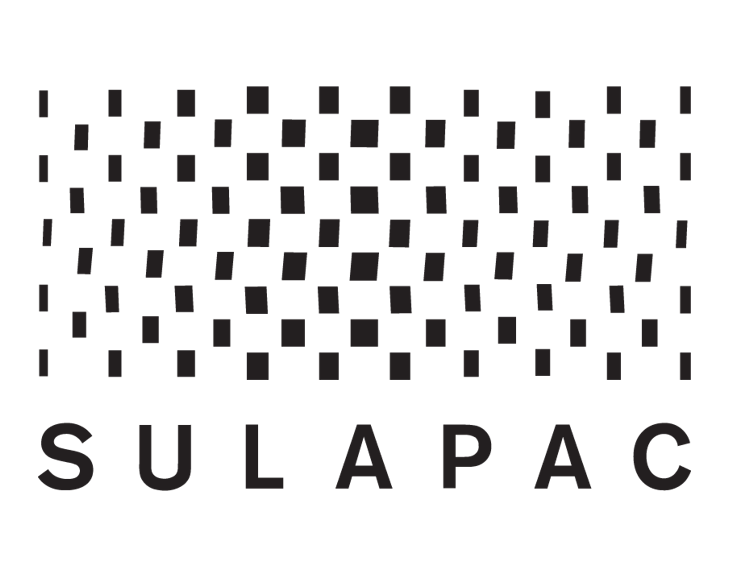
Sulapac
The Finnish startup has developed a biodegradable and microplastic-free material made entirely from renewable sources and certified wood. It can be used as packaging for everything from cosmetics to foodstuff to gift boxes and more. It has all the benefits of plastic, yet it biodegrades completely and leaves no trace once it’s gone.

Decomer Technology
The Estonian startup has developed water-soluble and edible packaging materials designed to offer an eco-friendly packaging alternative to the existing bio-hazard plastic ones. The material is plant-based that dissolves in water and has natural building blocks that can easily be composted, enabling packaging industries to use water-soluble edible packaging material.
Interested in a startup landscape or in an insights report?
Please fill out our contact form so that we can get back to you very quickly with our product offer.
Want to subscribe to our 123Fab?
Fill out our form to receive the latest insights into your inbox.
123Fab #68
1 topic, 2 key figures, 3 startups to draw inspiration from

It’s omnipresent. Decarbonization is underway in many sectors: micromobility, automotive, rail… In last week’s 123Fab, we even saw that a new generation of tractors is making inroads in agriculture. But what about the sector of maritime shipping?
Cargo and container ships, which refer to merchant ships carrying goods and materials from one port to another, are responsible for nearly 1 billion metric tons of carbon each year. Although the industry accounts for a relatively small share of global CO2 emissions — between 2% and 3% according to S&P Global Platts Analytics — scientists have projected that maritime shipping could account for 17% of total emissions by 2050. That’s why the International Maritime Organization (IMO) has set a target of decarbonizing global shipping by at least 50% from 2008 levels by 2050.
Yet many were left disappointed by the Glasgow Climat Pact, the outcome of the COP26 climate conference. Although steps forward have been made since the Paris agreement, which did not include maritime shipping at all, the only concrete outcome that came out of it is the ‘Clydebank Declaration’. The signatory countries agreed to support the creation of at least six green corridors by 2025. Initial analyses focused on two promising candidates for developing green corridors: the iron ore route from Australia to Japan, and container shipping from Asia to Europe. But out of the 50,000 ships currently plying international shipping lanes, only 200 will be green by 2030. This reflects the costs and complexity of decarbonizing shipping. Indeed, alternative fuels are more expensive than conventional heavy fuel oils, they have a lower volumetric density requiring the manufacture of larger tanks and the fragmentation of the industry is such that the incentive to invest in these technologies is low. Maersk, which owns the largest shipping fleet, announced that it would only have 8 ships ready to run on methanol by 2025. The lack of ambition on shipping emissions has thus been strongly criticized, with COP26 seen as a missed opportunity to push the industry for more rigorous commitments.
In the maritime industry, a number of measures can support its decarbonization, resulting in multiple possible pathways. In other words, there is no silver bullet to a low-carbon trajectory. However, only a combination of technological innovation, operational measures and alternative fuels will deliver sufficient CO2 reductions.
- Technological innovation — these refer to innovations applied to ships to help increase their energy efficiency. These can relate to the weight of ships (lighter materials), the design of ships, ways to reduce friction (hull coatings and air purification) and ways to recover energy (propeller upgrades and heat recovery).
- Operational measures — these refer to ways in which ships are operated. 4 types of measures can be distinguished: speed, ship size, ship-port interface (lower waiting time before entering a port) and onshore power (change their power supply from vessel’s engines to shore-based electricity).
- Alternative fuels and energy — numerous fuels exist to replace bunker fuels such as liquified natural gas (LNG), hydrogen, ammonia, methanol.
When it comes to alternative fuels and energy many possible options are currently being explored. While deep-sea vessels must store large amounts of energy to maintain a constant speed over long distances, the options are more varied for short-haul vessels, including the possible use of electric or hybrid-electric power and propulsion systems. Overall, there is a lack of technology when it comes to alternative fuels. If shipowners have begun to convert existing ships to run on LNG, it still emits methane. Biofuels are another solution that is becoming increasingly available as a marine fuel. Unlike LNG, it can be a carbon-neutral solution, but mass-scale biofuel production is not sustainable, which puts it in the same position as liquefied petroleum gas (LPG): a good solution but not a panacea. In the long-term, technological solutions, such as green hydrogen and ammonia, are expected to take hold. Intrinsically carbon-free, these fuels produce zero CO2 emissions when sourced renewably. In fact, the shipping industry is banking heavily on ammonia. Unlike hydrogen, it does not need to be stored in high-pressure tanks or cryogenic dewars and its energy density is 10 times that of a lithium-ion battery. However, for ammonia-fueled shipping to become a reality, port operators and fuel suppliers must build vast bunkering infrastructure so that ships can fill ammonia tanks wherever they dock. And technologies are still underway.
But decarbonization, while still in its infancy, is making progress. In November 2020, Yara claimed to have delivered the world’s first net-zero, battery-powered autonomous container ship to Norway. While it had been in the port of Horten ever since, undergoing further preparations for autonomous operation, the Yara Birkeland completed its first trip to Oslo (around 70km) at the beginning of the week. Alongside the construction of the ship, Yara has also initiated the development of green ammonia. As the world’s largest producer of fertilizers, and thus of ammonia, it is striving to push decarbonization in the shipping industry forward. At the same time, startups are positioning themselves on the topic. Greek startup DeepSea Technologies provides a vessel emission tracking solution, Norwegian startup TECO 2030 develops modular hydrogen fuels and American startup Prometheus Fuels removes CO2 from the air and turns it into zero-net carbon gasoline. In September of this year, Maersk announced its investment in the American startup.
In short, discussions around decarbonizing the shipping sector are emerging yet most measures focus on making ship design and the operation of vessels more energy efficient. To achieve the decarbonization of the industry, mechanisms increasing the use of alternative propulsion technologies will need to be strengthened. However, regulation and financial incentives will be necessary to make them technologically feasible and their adoption commercially viable, to reduce the current price gap between conventional ship fuel and more sustainable options.
2 Key Figures
At least $1 trillion in investments needed to decarbonize shipping
According to the Global Maritime Forum, the scale of cumulative investment needed between 2030 and 2050 to achieve the IMO target of reducing carbon emissions from shipping by at least 50% by 2050, is approximately USD 1-1.4 trillion, or on average between USD 50- 70 billion annually for 20 years.
1,177 Maritime startups
registered by Tracxn
3 startups to draw inspiration from
This week, we identified three startups that we can draw inspiration from: Prometheus Fuels, Hy2Gen and Shone.

Prometheus Fuels
The startup extracts CO2 from the air, creating hydrocarbon fuel with zero impact on greenhouse gas levels, enabling cars, planes and ships to replace fossil fuels with high-performance zero-net carbon fuels made from CO2 that’s already in the air.

Hy2Gen
The startup develops, builds and operates plants for the production of green hydrogen and hydrogen-based e-fuels. Hy2Gen recently joined forces with Swiss commodity trader Trafiguar to investigate green ammonia as a marine fuel.

Shone
The startup has developed a shipping automation platform that uses AI to provide a digital co-pilot to improve the safety and energy efficiency of maritime operations, enabling reductions in fuel consumption and carbon emissions.
Interested in a startup landscape or in an insights report?
Please fill out our contact form so that we can get back to you very quickly with our product offer.
Want to subscribe to our 123Fab?
Fill out our form to receive the latest insights into your inbox.
123Fab #67
1 topic, 2 key figures, 3 startups to draw inspiration from

Within weeks, in January 2021, the 215 million euros allocated to the conversion of agricultural equipment in France were distributed by the government as part of the 2020-2022 stimulus plan. This measure, implemented in early 2021 following the COVID19 crisis, consisted of investment assistance for the replacement of old and inefficient equipment and the acquisition of environmentally efficient equipment. Indeed, agriculture is one of the world’s biggest greenhouse gas contributors. The sector is projected to account for about 20% of total global emissions in the next 20 years (Reuters). According to a McKinsey report, of the 25 measures identified to reduce emissions, replacing tractors and combine harvesters that use fossil fuels with lower-emission vehicles would have the biggest impact, although no vehicles are commercially available now on the market. From a more global perspective, electrification is truly underway. Fully electric cars now account for 7.5% of new sales in Europe, and truck manufacturers are also moving towards sustainable mobility.
Despite the lag in the electrification of agricultural machinery, particularly the heavier ones, the seeds are sown for the electrification of farming vehicles and multiple companies already have been working on electric-powered prototypes. According to IDTechEx, the market for electric vehicles in the construction, agriculture and mining sectors could reach $149 billion in 2030. John Deere, an industry leader, has proposed a conceptual model of electric tractors that could allow autonomous operation, increasing efficiency and accuracy. Cable power could even eliminate the need for onboard batteries, so an electric version would not weigh more than its fossil-fueled counterpart. Japanese company Kubota also presented models that allow for autonomous operation and can adjust to the height in the field. The company’s concept tractor was also equipped with an onboard solar battery. California-based Solectrac already offers small tractors and agricultural utility vehicles in the 30 and 40 horsepower range. Other relatively small tractor options are offered by Fendt, Rigitrac, Escorts and others. At the same time, almost all aerial drones are electric. Research is focusing on small electric ground-based autonomous vehicles, such as robots that sense the plant environment. They could be particularly helpful for family farms in developing regions that still use non-mechanized methods for agriculture.
Some startups are also tackling this market and fundraising is on the rise. Silicon Valley-based company Monarch Tractor, which creates electric robotic tractors to make farming safer and more sustainable, raised $20 million in March as it prepares to start deliveries. The startup calls its tractor “driver optional” as it can perform programmed tasks without a driver. It is designed with roll and collision prevention and can collect and analyze data. Startup Blue White Robotics, which notably retrofits traditional tractors into fully autonomous vehicles by adding sensors and AI models, has raised $37 million in Series B funding a month ago. In the last 2 years, $1.5 billion has been funded in AI for the agriculture sector according to Tracxn. At the beginning of October, startup Sabi Agri, which develops electric agricultural equipment for agro-ecology, was named a winning company in the EIC (European Innovation Council) Accelerator program. It creates lightweight autonomous tractors that avoid degradation and compaction of cultivated soil and reduce emissions. Autonomous robots and tractors are booming, and the challenges of electrification are being met little by little by large groups as well as startups.
But there is a big step to take from prototypes and limited applications to widespread adoption. Electric engines face major logistical challenges, particularly with regard to charging, replacing diesel-burning machines in the field. Indeed, the use of agricultural machines is not very regular but requires great autonomy, they are often used a few weeks per year (16 days in average) but with durations that can go up to 15 hours per day. Planting time is limited, and the efficiency of the machines is therefore essential. Machine weight is also crucial to avoid soil compaction and Wi-Fi connectivity is an additional challenge for all onboard AI mechanisms. Beyond the technical constraints, an agricultural machine is expensive, machinery capital amounts to approximately 11% of farm income on average, and the frequency of fleet renewal does not allow for a generalized adoption as quickly as for utility vehicles. That is why niche areas for smaller electric machines and robotic equipment could probably expand more quickly because they have fewer constraints.
Agriculture today faces many mobility challenges. A balance must be struck to serve the goal of increasing yields and productivity while reducing emissions and managing land more sustainably. Beyond the modernization of machines, the development of AI, especially embedded, can contribute to this objective by providing more real-time data analysis, facilitating farmers’ decision-making and thus improving machine action.
2 Key Figures
The global agricultural machinery market is anticipated to reach $194.94 billion by 2026, registering a CAGR of 5.4% between 2020 and 2026
The market was valued at $138.59 billion in 2020 – Mordor Intelligence
+300 funded companies in AI for Agriculture
Tracxn – 2021
3 startups to draw inspiration from
This week, we identified three startups that we can draw inspiration from: Blue White Robotics, Sabi Agri and Monarch Tractor.
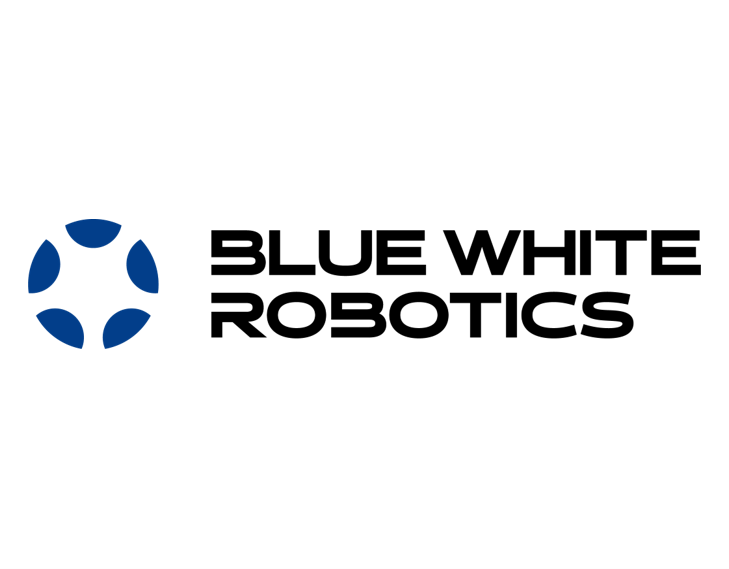
Blue White Robotics
The startup has developed a robot-as-a-service platform intended to deliver remote control capabilities for land and air autonomous robots. The platform transforms existing fleets, manages both air and ground robots, and collects data seamlessly, thereby enabling businesses to improve efficiency and provide actionable insights.

Sabi Agri
The startup has developed electric agricultural equipment for agro-ecology. The light autonomous tractors will be able to replace all thermal tractors, regardless of their power in multiple agricultural projects (viticulture, field crops, breeding…). They enable farmers to incorporate cost-effective agro-ecological farming practices.

Monarch
The startup has developed electric tractors intended to make the transition to productive and sustainable farming practices. The company’s tractors run on artificial intelligence and are equipped with sensors and 360° cameras to implement, identify and eliminate plant ailments and estimate yields, enabling farmers to enhance the existing growing operations.
Interested in a startup landscape or in an insights report?
Please fill out our contact form so that we can get back to you very quickly with our product offer.
Want to subscribe to our 123Fab?
Fill out our form to receive the latest insights into your inbox.
123Fab #46
1 topic, 2 key figures, 3 startups to draw inspiration from

Given its impact on the environment, the mining industry is challenged to become green, or at least as sustainable as possible for an extraction company. Drilling changes landscapes and biodiversity, generates waste, uses large amounts of water and polluting machinery, and the mine environment is dangerous to work in. And this is all the more problematic because most of the products used in the world depend on the mining industry, from the pipes in our homes to the materials in our smartphones. It also plays a key role in sustainable transformation, producing, among other materials, lithium for electric car batteries, silica for solar panels, nickel for electrodes in hydrogen production. As the mines are often located in the emerging countries of the southern hemisphere and the extracted materials are most often used in the developed countries of the north, this accentuates the climatic debt of the “North” to the “South”.
However, some startups are looking at this issue to transform the mining industry into a greener and more sustainable activity.
Sustainable drilling technologies
The drilling phase has the most visible impact on the environment. Huge amounts of soil are moved, roads are built to make way for trucks and heavy machinery, and trenches are dug to divert water. Some startups have focused on designing new drilling methods that reduce the environmental disruption of this process. Earth AI uses artificial intelligence to locate prospective sites for rare materials and is patenting its “zero disturbance drilling hardware” to determine drilling parameters without prior groundwork. Novamera has developed Sustainable Mining by Drilling (SMD) technology, a surgical mining method that extracts ore but leaves waste in the ground. It drastically reduces emissions and waste and consumes less water than conventional drilling methods by recycling it.
Turning to renewable energy
Mining operations often take place in parts of the world that use fossil fuels to power their machinery. As a result, there is growing interest in renewable energy to reduce this significant portion of GHG. Independent energy producer Tugliq provides off-grid, autonomous power supply from solar, wind, and biomass that can be used for mining operations, lowering their dependency on fossil fuels and their carbon footprint. Raglan mine and Tuglic’s partnership has avoided the use of 10 million liters of diesel since 2014 in their Canadian arctic mining operations. Heliogen’s Heliopower solution generates electricity from sunlight to power mining operations with renewable energy. Two months ago, Rio Tinto announced a partnership with Heliogen to reduce their carbon footprint in their Boron mine, targeting a reduction of up to 24% in their CO2 emissions.
Effluent treatment
Part of the negative environmental impact of mining comes from wastewater, which, once used during the mining process, is polluted and difficult to dispense or treat. Some startups like Auxilium Technology Group are addressing this challenge by treating mine effluents and wastewater, retrieving valuable materials such as heavy metals and rare earth elements, and limiting evaporation, thereby reducing the overall water consumption of the process. As for soil contamination, Allied Microbiota develops microbes that break down contaminants in the soil. Instead of moving contaminated soil to a landfill, it can be efficiently treated.
Zero carbon lithium
While some startups have designed greener mining processes, others have developed their own sustainable mining technologies. Lithium, for example, is critical to the transition to electric mobility. Yet conventional mining techniques release a lot of greenhouse gases and use a lot of water. In addition, most of the lithium in Europe is imported, which adds transportation-related emissions. Vulcan energy, GeoCubed, and Cornish Lithium offer zero-carbon production of lithium and geothermal electricity production by extracting a lithium-rich geothermal brine before harvesting the lithium and re-injecting the brine. Because the brine is at a high temperature when pumped at the surface (~165°C), the heat is used to provide geothermal electricity, so the entire process produces more energy than it consumes.
To conclude, the mining industry has yet to be fully transformed. Although a few startups are positioned in the market, it remains complicated to enter given the high upfront capital expenses required. But consumer expectations are putting increasing pressure on players to become more sustainable. Ultimately, recycling remains a solution to reduce mining-related emissions, while improving the lifespan of these materials, reducing the reliance on extraction in developing countries and avoiding emissions related to the transportation of raw materials around the world.
2 Key Figures
35 sustainable mining startups
registered by Tracxn
Green mining market expected to reach $12.9 Bn by 2024
The sustainable mining market was estimated at $9 Bn in 2019 and is expected to reach $12.9 Bn by 2024, at a CAGR of 7.5%
3 startups to draw inspiration from
This week, we identified three startups that we can draw inspiration from: Tugliq, Allied Microbiota , and Cornish Lithium.
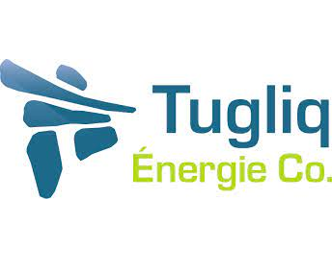
Tugliq
Tugliq Energy is a Montreal, QC based private company whose line of business is Electric services. TUGLIQ is a specialist Independent Power Producer (IPP) focused on remote and complex energy diversification for off-grid and/or hybrid applications with solutions tailored to the mining industry, remote villages and islands.

Allied Microbiota
Allied Microbiota developed biotechnology products designed to clean-up environmental contamination. The company’s products are microbes and their enzymes to create sustainable bio-chemicals, enabling customers to use such microbes for environmental and industrial applications to break down pollutants and reduce contamination.

Cornish Lithium
Cornish Lithium is a UK based startup operating a lithium mining and exploration company intended to provide environmentally sustainable extraction of lithium. The company’s services aim to create a new, environmentally-responsible, lithium extraction industry, enabling clients to have sustainable products essential for the transition to a green economy.
123Fab #39
1 topic, 2 key figures, 3 startups to draw inspiration from
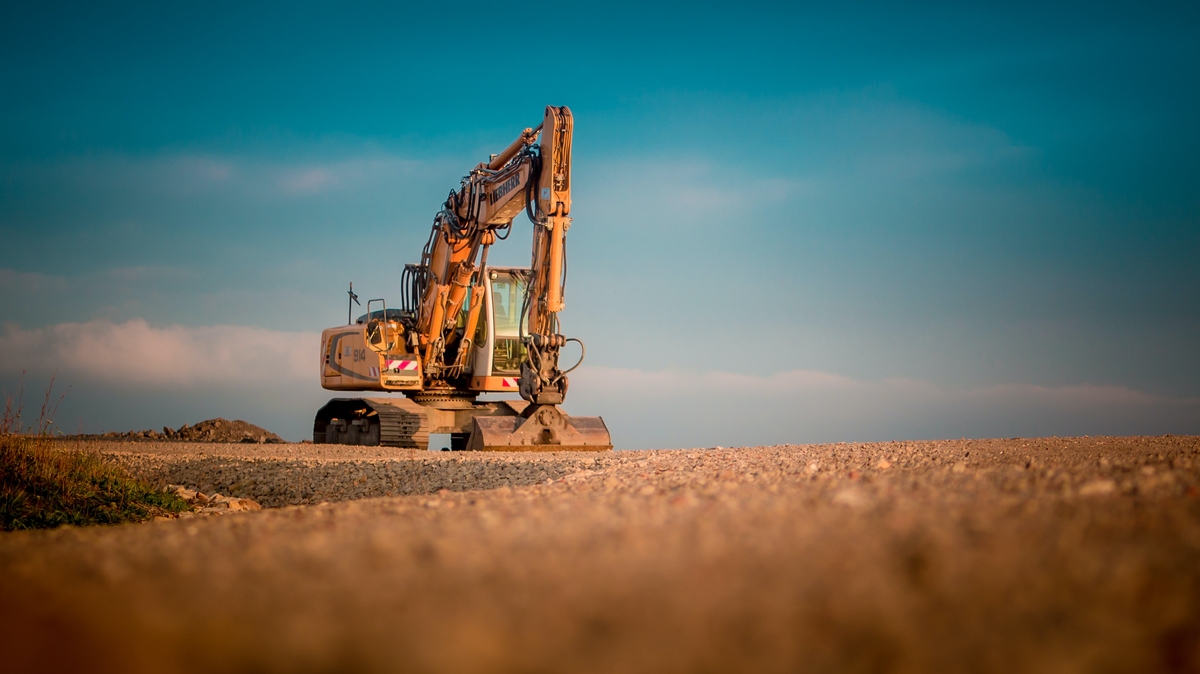
Industry 4.0 and the Internet of Things have transformed the way we view industrial machinery. Whether it’s construction equipment, farm equipment, metalworking machinery, woodworking machinery, forklifts, it’s no longer just about mechanical equipment. Most industrial machines are equipped with a large number of sensors, cameras and are connected to the company’s network. From predictive maintenance to avoid breakdowns to defect detection, connected machinery is significantly improving competitiveness and efficiency. It is also helping to address Corporate Social Responsibility (CSR) issues by increasing operator safety and facilitating their work, as well as energy use efficiency. However, there are two points to note: on the one hand, these machines are on average more expensive than conventional equipment, and on the other hand, with the evolution of technologies, they become obsolete at a higher pace.
To avoid paying the high price of these machines, industrials and corporates have found new ways to access these technologies. One of which is retrofitting. The principle of retrofitting is simple but efficient: any industrial corporate with legacy machines can send them to a retrofitting company, which will retrofit sensors and connectivity panels to make them smart. This avoids paying for a whole new machine that workers do not master and grants access to the latest technology. Some startups, like Teleo, retrofit existing construction equipment into teleoperated robots. Last month, the startup was selected by construction equipment manufacturer Deere & Co. to join its Startup Collaborator program. Other startups, like Kontrol energy corp, aim to reduce energy costs and greenhouse gas emissions in industries by retrofitting energy consumption monitors.
In recent years, another way to reduce the cost of purchasing connected industrial machinery has made inroads: second-hand machinery marketplaces. These platforms were traditionally a B2C tool, but the growing need for cost-effective solutions for industrial machines has led to an expansion of these platforms to a B2B model. Some of them are generalists like Vendaxo, which lists machines ranging from food processing to construction and heavy equipment. Others, like Moov or Makinate, target more specialized segments (semiconductor and metal/plastic industries respectively). Each has its own business model, some focusing on platform assistance, and others offering a wide range of services coupled with their platform: financing, preparation, loading, transportation, and installation like Gindumac.
Another tool to enhance the lifespan of industrial machinery is rebuilding. The machine is completely dismounted, then remounted, and end-of-life parts are replaced. This is often a service offered by Original Equipment Manufacturers (OEM) and specialized companies, as workers must have extensive knowledge of each model.
Although the second-hand market is expected to be worth more than $142 billion by 2026 for construction machinery alone, according to Global Market Insights, there are relatively few startups positioned in the second-hand machinery marketplace segment. In fact, fewer than 10 startups are registered on Crunchbase. This is because the logistics of transporting and storing these machines, as well as the financing involved, are difficult for newcomers to tackle, especially when it comes to international transactions and shipments. That is what leads us to believe, for now, why most startups positioned in the marketplace segment are working primarily on facilitating other aspects of these transactions, such as machine quality checks, escrow payment, or counseling.
One of the big obstacles standing in the way of these platforms is transportation: connecting buyers and sellers from all over the world is one thing, but transporting multi-ton machines from one to the other is another. One thing is sure, there is room for innovative solutions for the disposal of used machinery, whether it’s retrofitting, marketplaces or recycling (like French trains from SNCF). The trend seems to be toward more eco-responsible and reusable machinery.
2 Key Figures
<10 used/second-hand industrial machinery marketplace startups
registered by Crunchbase
Market size expected to reach $142Bn by 2026
The size of the used construction equipment market alone is expected to reach $142Bn by 2026.
3 startups to draw inspiration from
This week, we identified three startups that we can draw inspiration from: Equippo, Moov, and Gindumac.

Equippo
Equippo is a startup founded in 2014 in Switzerland operating an online marketplace intended to simplify buying and selling of used construction equipment. The platform performs machine inspection, manages the payment, shipping, trucking, and clearance of heavy equipment for buyers from all over the world, including markets like South America, Russia, and Poland.
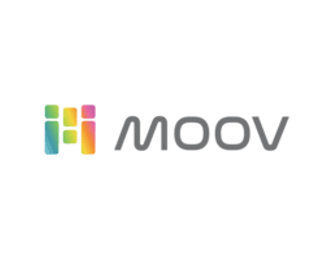
Moov
Moov is a San Francisco based startup providing online marketplace designed to sell used manufacturing equipment.The platform matches buyers and sellers of pre-owned semiconductor manufacturing equipment and automates documentation, information sharing and the transaction process.
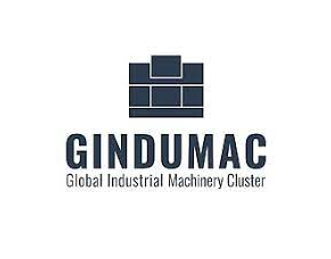
Gindumac
Gindumac is a German startup operating an online platform for used machinery trading intended for sellers and buyers of industrial machinery. The company buys and sells used machines including machine tools, sheet metal, plastics processing, automation and injection molding machines from various international manufacturers in the metal, sheet metal and plastics processing industries.

